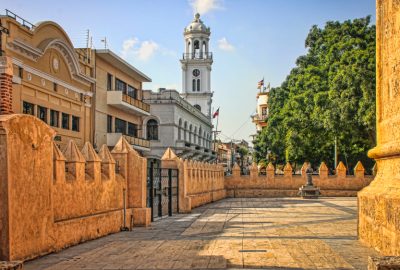The Dominican Republic recently became a major honeymoon destination. I lost track of how many happy couples I removed from my Facebook feed the past two years. That island is a paradise, there’s no denying that. Don’t let your Facebook friends fool you though; there’s much more to it than beaches and hammocks. 2019 wasn’t the best year for DR’s tourism industry. There have been over 16 reported deaths and everything sounds a bit fishy, to say the least. People have been falling ill overnight and dying of unknown causes. The Dominican government insisted that the bodies be cremated instead of shipped to their home countries. Some people have reported missing organs. The case has become a bit of a viral urban legend at this point. Watch your back and avoid drinking cocktails from uncertain sources. It’s a beautiful country and the travel is worth every penny but maybe wait until this “incident” gets cleared out.
Santo Domingo was the first bastion of civilization during the 15th century exploration of the New World. Christopher Columbus’ brother Bartholomew founded this city. You could say it is the family’s bona fide legacy. It was also the first place to “welcome” the African slaves to the New World. They made them work on many a sugar cane plantation. That, as history dictates, led to uprisings. The Dominican Republic went through quite a few of those. Not to mention wars, battles for independence and disgusting dictatorship. Noticed all those streets with American names? That’s when the US stepped in to calm things down and install some freedom. You can learn more about those revolting times at the Memorial Museum of Dominican Resistance. It showcases even the torture chambers and tools: a painful reminder that dictatorships are not cool.

The always alive Parque Colon, previously known as the Plaza Mayor, is a park and square in the very centre of the historical Ciudad Colonial district of Santo Domingo
Santo Domingo took all that surprisingly well and remains a beautiful capital. The entire colonial part of the city is a UNESCO World Heritage Site. Plaza de España is one of its more important landmarks. It’s not only a social gathering ground and a space for cultural events, but also a valuable historical treasure. Alcázar de Colón overlooking the square is home to the largest collection of colonial art in the Caribbean. Diego Columbus, the explorers’ son lived in this mansion. I wouldn’t call it beautiful. It looks like a brick, but it’s still a piece of history. Makes you think that we’re lacking that sort of exceptional people in our age. They even built the first sewer system in the New World. I wouldn’t tell people to go and explore the sewers but these are something else. They are fully bricked out, looking more like a dungeon or catacombs. They closed them down in 2016, but fingers crossed they’ll reopen the thing for tourists in future. The fortifications along the Ozama river are yet another “first in the New World”. I can’t help being impressed by these things. They landed on a completely unexplored land and built a city from scratch. All the manpower, all the resources they had to procure. It’s mind-blowing spectacular stuff.

The Palacio Consistorial, located in the Colonial City (Ciudad Colonial) of Santo Domingo, is located where was once the oldest Town Hall in the Americas
People say that Dominicans are rather high on the booze intake. Apparently, the employees of sugar cane farms and rum distilleries have a hard time saying no to a drink during work. Driving under the influence is not uncommon; take extra care if you see a wonky vehicle. Caribbean people take life a little too easy at times. They do love their rum despite the grim history tied to it. Now it’s a big part of their tourism: tastings, museums, that kind of stuff. Barceló has an amazing historic centre located in San Pedro, about an hour drive from Santo Domingo. It’s also one of the best rums in the world. Cubans would argue otherwise, as they would with cigars. This islands’ incredibly fertile soil nourishes the arguably best tobacco in the world. That coupled with generations worth of expertise equals some world-class cigars. You’re probably thinking: “What about Cuba? Don’t they take the crown?” Truth is that many families have left Cuba for DR when Fidel took over. You could say it is a bit of a joint effort now when it comes to cigars. Santo Domingo comes alive during night, that’s the best time to try everything this island has to offer. Avenida Venezuela and Avenida Abraham Lincoln are the main streets when it comes to Santo Domingo’s nightlife.





No one commented yet. Be the first.